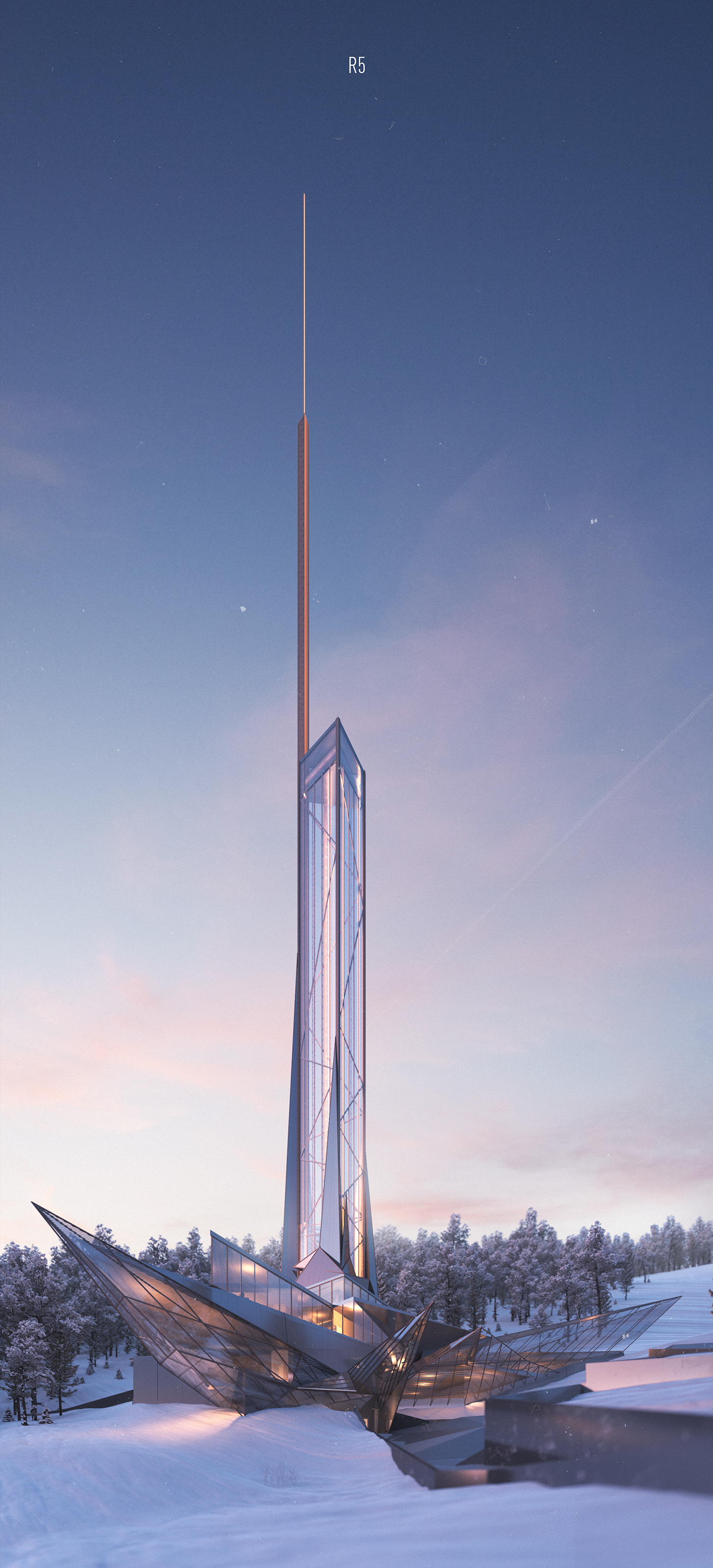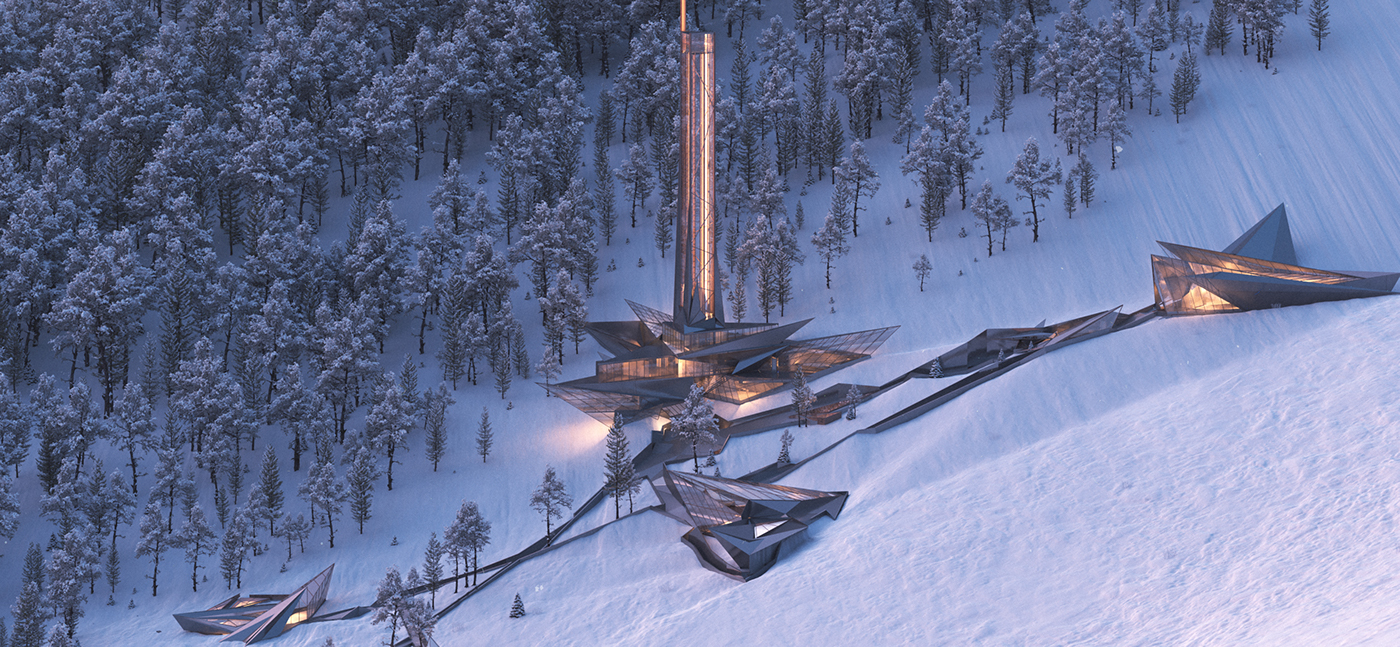
PROLOGUE
The Urals extend back over 200 million years. Through much of this period, they were continuously affected by harsh environmental conditions: for thousands of years the mountain group had been destroyed by wind, water and ice. This is why the Ural Mountains are among the lowest in the world. Nevertheless, areas of outstanding natural beauty have survived in the Urals to the present day, which feature remnants of mountains groups, which age exceed one million years. One of such places is known as the Manpupuner Plateau. This plateau as well as the rest of the hills were exposed to the destructive effect of environment and time. In the first place, soft rock gave in under the environmental stress, but tougher rock, nevertheless, survived till the present. Geologists call them “relics”. At the Manpupuner the relics have the form of huge stone pillars with the height ranging from 33 to 45 meters (all in all there are 7 pillars of bizarre form at Manpupuner).
The architecture of weathering is a combination of four boundaries, which constitute a physical form.
The time boundary – past, present and future.
The elements boundary – air, earth, water.
The boundary of myth and reality.
The geographical, social boundary.

TIME
In the past we used to fall back upon the place, sacred to all the Mansi people, which pinnacle could be accessed only by shamans; when translated form the local language, Manpupuner means “a small mountain of idols”; in the time of heathenism, the Mansi people worshipped, the stone giants”. Currently, the Pechoro-Ilichskiy natural reserve features the mountain range and the relics on Mount Manpupuner, as well as the virgin forests, which are places of world environmental heritage of the UNESCO. In 2008 the weathering pillars were classified as one of the Seven Wonders of Russia. In the future, it is necessary to undertake measures aimed at preservation and study of the natural reserve, its plant life and animals in their natural environment, as well as restoration of the natural ecosystems.

THE ELEMENTS
Air (or wind) – weathering – totality of the processes of physical and chemical destruction of rock formation, when exposed to temperature variations, freeze-thaw and chemical impact of water, as well as atmospheric gasses and organisms. The land (relief) of the reserve territory was formed due to considerable impact of the Ural latest glaciation. There are four systems of meridian ridges of the Northern Ural. Water (snow, ice) comprise s the bigger part of the upper part of the mountains during most of the year – 220 days (from May 7th till October 23rd).

MYTHS AND LEGENDS
The Mansi tribe legend has it that in the distant past a powerful Mansi tribe used to live in the close proximity to the Ural Mountains. The tribal chief Kuuschai had a beautiful daughter Aim and a son Pigritchum. The beauty of the young beauty rang far over the ridge. The giant Torev heard of the tribal chief’s daughter and demanded that Kuuschai would give the daughter to him, but Aim refused to comply. Then, the enraged Torev called his giant brothers in order to take the beauty by force. During this time, her brother the shaman Pigritchum and some warriors were away hunting. The giant came upon them unawares; the fierce battle under the fortress wall continued all day long. At this moment Aim from the tower implored the gods for help and asked them tell her brother about the attack. As soon as Aim descended the crysta l tower, it crumbled under the crushing blow of the giant’s bludgeon. The castle disintegrated and its pieces were carried by the wind all over the Urals. Since then people find pieces of rock crystal in the Ural Mountains. When the giants were about to get hold of the beautiful Aim, the rays of the rising sun turned the giant and the Torev into stone giants.

GEOGRAPHICAL
The geographical boundary – mapping out approach routes from outside (the Komi Republic and Sverdlovsk region), setting up of the main meteorological office for the Komi Republic, developing of tourist trails for the natural reserve visitors (inclusive of helicopter routes), design of a single research and tourist centre as well as consolidation of social groups (scientists, aboriginal inhabitants, tourists).

THE PROJECT CONCEPT
Development of an architectural complex for the whole Pechoro-Ilichskiy natural reserve;
Development of infrastructure for all transportation junctions: helicopter pad, setting up of the area inside the complex – the pad, the underground structure, linking the social blocks, the superstructure, approach routes to the Manpupuner (from the Komi Republic as well as Sverdlovsk region)
• Implementation of the package of measures for development of the natural reserve itself;
• Development of the infrastructure for the scientific employees and the forests rangers of the natural reserve, who will reside there permanently and cater for its needs;
• Well-balanced utilization of the land natural topography;
• Creation and utilization of the power supply structure, which will have minimal effect on the environment (pollution-free fuel). Having established the boundaries, we have determined the sensitive matter among all directions, creating a single architectural complex, which combines, the geographical analysis, the time analysis in respect of its three components, history and folklore, as well as the element boundary, especially, the weathering pillars interpretation.
Development of infrastructure for all transportation junctions: helicopter pad, setting up of the area inside the complex – the pad, the underground structure, linking the social blocks, the superstructure, approach routes to the Manpupuner (from the Komi Republic as well as Sverdlovsk region)
• Implementation of the package of measures for development of the natural reserve itself;
• Development of the infrastructure for the scientific employees and the forests rangers of the natural reserve, who will reside there permanently and cater for its needs;
• Well-balanced utilization of the land natural topography;
• Creation and utilization of the power supply structure, which will have minimal effect on the environment (pollution-free fuel). Having established the boundaries, we have determined the sensitive matter among all directions, creating a single architectural complex, which combines, the geographical analysis, the time analysis in respect of its three components, history and folklore, as well as the element boundary, especially, the weathering pillars interpretation.
















Architecture
Egor Zbaranskiy
Victoria Boginskaya
Visualisation
Andrey Merekin
THANK YOU FOR WATCHING



